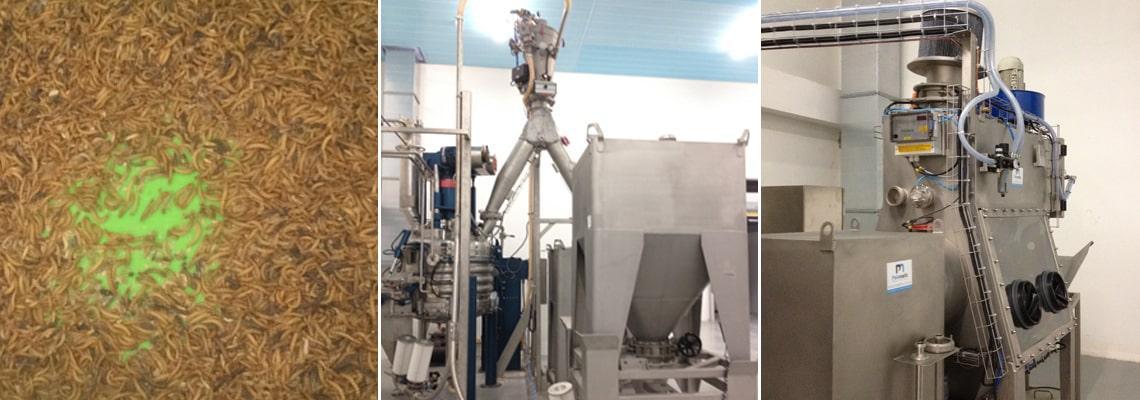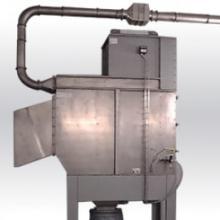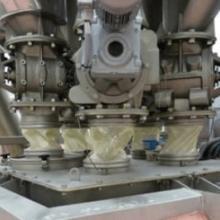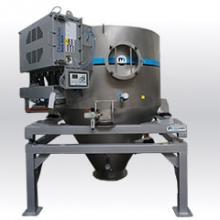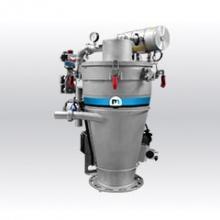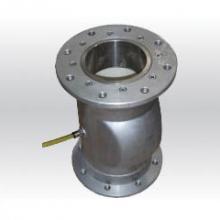Processed products: bran, flour, Frass, live insects, dead insects
Insect breeding unit
- Sorting workshop -
This sorting workshop makes up phase 2 of a production and processing unit for insect larvae.
This workshop is the center of the insect breeding process. It is made up of 2 sets:
- Set A: Mixing line for feeding dry matter (substrate, bran, flour) to breeding tanks (larvae, adults). A set of transitions allows management of the growth tanks in which larvae are "raised" during the different stages of growth. The bins are stacked on top of each other in the style of a vertical farm.
- Set B: Automated sorting line for the separation and redistribution of insects according to their evolution (neonates, larvae, adult insects and Frass).
SET A: Mixer Feeding by Pneumatic Pressure Conveying
A CYS cyclo-filter is installed above the customer's 15,000 liter mixer to supply it with bran and flour, coming from the product reception workshop.
The dilute phase pneumatic pressure conveying system consists of the following components:
- Rotary valve PI 300 and gearbox installed at the entrance of the conveying system
- Rigid transfer piping
- Flame check valve on the material piping upstream of the cyclo-filter
- CYS cyclo-filter with bag filter box and Indoor explosion vent (flame suppressant)
- Rotary valve PI 300 flame barrier, allowing continuous discharge of the cyclo-filter and protection of the downstream process in the event of an explosion.
The assembly is ATEX 20/22 certified.
The 15,000 liter mixer allows the “bran / flour” materials to be homogenized. The product is then unloaded via gravity to a buffer hopper equipped with a dosing system which will feed each growth tank.
The distribution of the feed mix to the larvae is carried out using a Palamatic dosing system and conveyed by a complete transit system.
SET B: Capture on the Frass sorting and recovery lines
The installation allows the reprocessing of insect frass (dead insects and excrement), conditioned in growth tanks.
The sorting of the bins is carried out automatically using turning robots and 3 sorting systems via air flow.
ust collection rings are installed in the turning zone of the tanks, making clean up of these areas easier by limiting clouds of fines during the turning operation. These made-to-measure rings are connected to the central dust collection unit.
At the rejections outlet for non-compliant products (Frass) coming off the three sorting columns, speed-up boxes are installed. All three are connected to the VFlow® 03 aspirated pneumatic transfer circuit , allowing the transfer of the frass to the processing workshop.
The pneumatic transfer circuit is sized to allow simultaneous vacuum on two batches. The maximum line rate is 1000 kg / h. (apparent density: 0.4).
A gearbox (product support part) is fixed under the hopper to allow the transfer of the product to the cyclone, which is equipped with an air inlet filter.
The "transfer" assembly is made up of:
- 6 gearboxes
- 1 piping network
- VMP pinch valve to automatically select the desired transfer line
- 1 cyclo-filter receiver - model VFlow® 03
- 1 PI 175 rotary valve at the outlet of VFlow® 03, for regulated and continuous discharge
- 1 dry vane vacuum pump connected to the VFlow® 03
The assembly is ATEX 20/22 certified.
The preferred solution for the transfer of powders is by pneumatic vacuum conveying.
This technology offers many advantages:
- Simplified powder handling system compared to a pressure pneumatic transfer: no rotary sluice.
- Line cleanliness after transfer: vacuum line purge system after transfer.
- Cleanliness of the environment: in the event of a transfer line leak, there is no risk of “polluting” the atmosphere since the operation is carried out by vacuum.
- Easy cleaning of the receiving cyclo-filter: hinged filtration head allowing direct access to the interior of the cyclone.
- Low power consumption.
- Financially more advantageous than the pressure pneumatic transfer, taking into account the number of incoming points (no rotary sluice).














